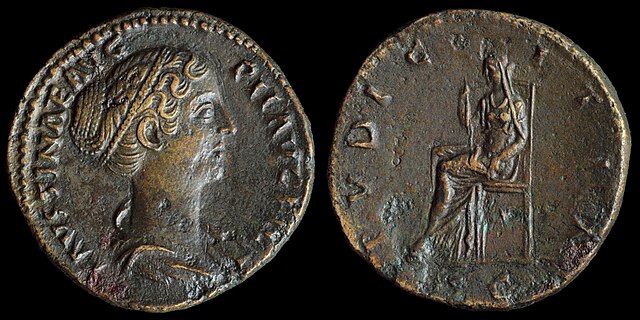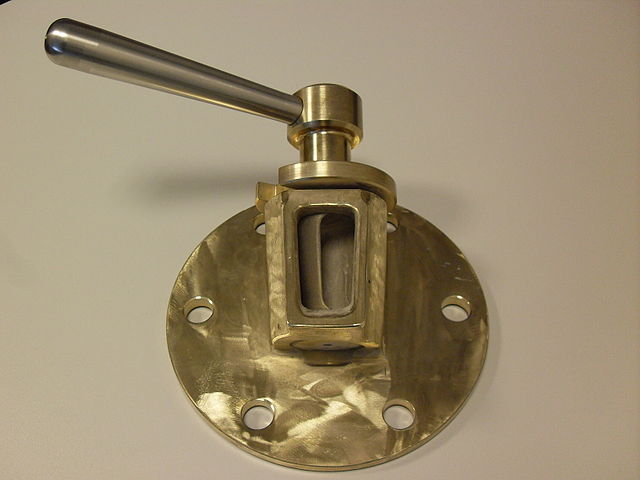The dupondius was a brass coin used during the Roman Republic and Roman Empire valued at 2 asses.
Sestertius of Hadrian, dupondius of Antoninus Pius, and as of Marcus Aurelius
Dupondius of Vespasian (69–79), struck at Lyon in about 72–73. This coin seems to have escaped the serious corrosion typically observed in ancient coins and thus retains nearly its original appearance and colour, showing why the Romans sometimes also called this alloy aurichalcum, from aurum for gold in Latin+"-chalcum" as in the most widely used orichalcum. The coin measures about 29mm in diameter.
Image: 0201trajan
Image: Faustina II
Brass is an alloy of copper (Cu) and zinc (Zn), in proportions which can be varied to achieve different colours and mechanical, electrical, acoustic, and chemical properties, but copper typically has the larger proportion. In use since prehistoric times, it is a substitutional alloy: atoms of the two constituents may replace each other within the same crystal structure.
Islamic Golden Age brass astrolabe
Brass lectern with an eagle. Attributed to Aert van Tricht, Limburg (Netherlands), c. 1500.
Microstructure of rolled and annealed brass (400× magnification)
Brass sampling cock with stainless steel handle








